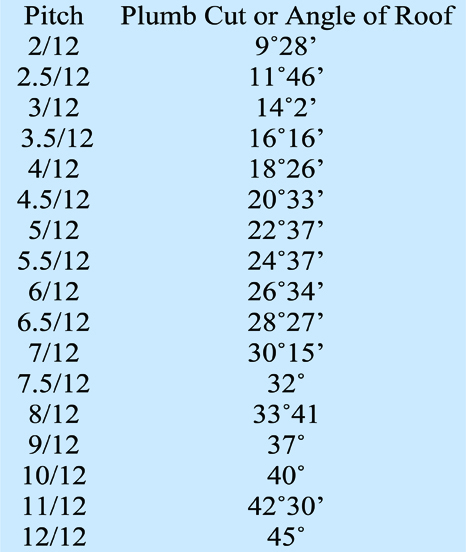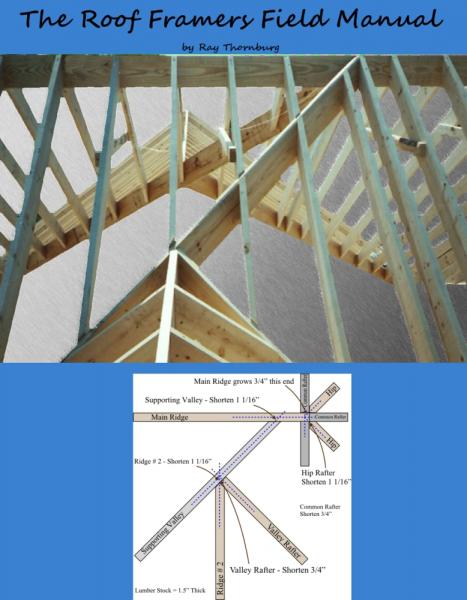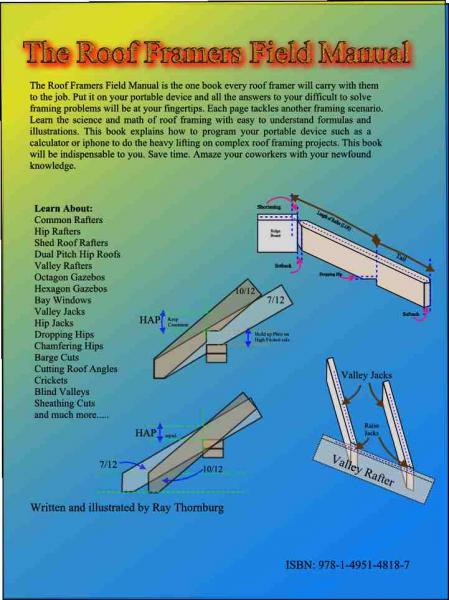- Home - Blue Palmetto Home Inspection of Summerville and Charleston
- Learn About Us and This Charleston Home Inspector
- What's Inspected
- Charleston Lowcountry Inspection Areas (geographic)
- Testimonials
- >>>Blogs (educational)
- Sample Reports & Documents
- Why Get a Home Inspection Report
- Charleston's Top Ten Reasons
- Home Inspector Photo Galleries
- Pricing
- Scheduling and Customer Information
- Home Inspection Authorization Contract
- General Scope of Work (electronic)
- Home Inspection Customer Satisfaction Survey
- Privacy Policy
- Full site
- The Roof Framers Field Manual
How to convert roof pitch to degrees
Submitted by Ray Thornburg on Tue, 01/29/2013 - 15:52
How to Figure the Angle of a Roof in Degrees from the Pitch
Tangent is the trigonometric function we use to figure this out. Tangent is the number we get when we divide the opposite side by the adjacent side. Since we are carpenters we’ll call this rise divided by the run or rise/run. For example on a 7/12 roof we divide 7 by 12 to get the number .583333. This number is called the tangent. Next we’ll enter inv tan .5833 and exe on our calculator. The result is 30.255012 or 30 ¼ ˚. Bear in mind that this number is the decimal equivalent so we will have to change it to degrees, minutes and seconds.
Circle = 360 degrees, written as 360˚
Degree = 60 minutes, written as 60’
Minute = 60 seconds, written as 60”
So to change 30.255012 to something we can understand we subtract the integer portion and multiple the decimal portion by 60. For ex. (30.255012 – 30) x 60 = 15.3007 minutes. Now subtract 15 and multiply .3007 x 60 to get 18 seconds. Final answer 7/12 = 30˚15’18”.
It is important to note that most programmable calculators will have a button on it (˚ ‘ “) that will convert decimal degrees to degrees, minutes, seconds automatically.
Shameless Self Promotion: Consider buying my book- The Roof Framers Field Manual. It tells all! Ok...on with our discussion.
Study the diagram below.
Hypotenuse = the long side of a right triangle
Adjacent Side = Run
Opposite Side = Rise
/ = divided by
The most common angles for roof pitches are printed on the side of a speed square. However; knowing this basic mathematical formula is essential when working with complex roof designs. Notice that angle A is the slope of the roof from horizontal, the angle of the plumb cuts and the angle to set your saw when cutting gable studs for instance.
Just a quick note here* - rise divided by the run is also how we figure percent of slope. So the formula for percent of slope is rise/run x 100 = percent of slope. In the above example percent of slope is 58. Percent of slope is often used to express road grade conditions. You'll not likely find the term used for home building.
Here is a page with Common Rafter Terminology that you might find helpful.
Here is a handy conversion chart to convert roof pitches to degrees in case you don't have time for all that math. The chart shows plumb cuts so to get the level cut remember that 90 - plumb cut = level cut.
Hip rafters are different. When determining the angle of a hip use 16.97 instead of 12 in the formula above. Want to know more about hip rafters? Visit our How to lay out a Hip Rafter page for more info.
If you found this information useful..... Leave a comment...... We'd love to hear from you!
If you want even more roof framing secrets buy my book! The Roof Framers Field Manual has it all.
Just click the links to be taken to our buy now page!




